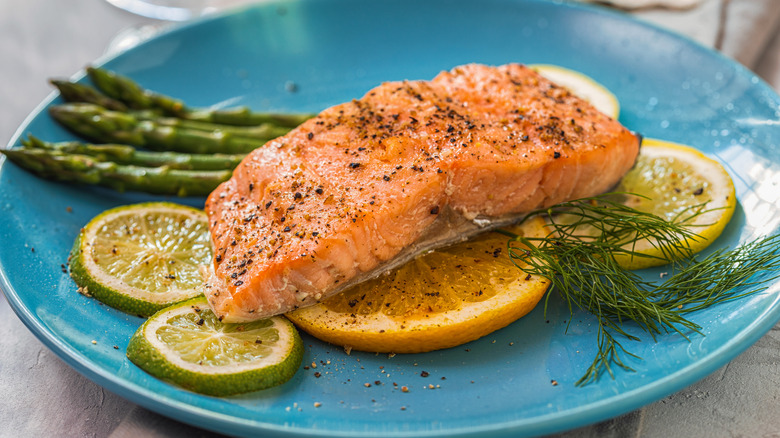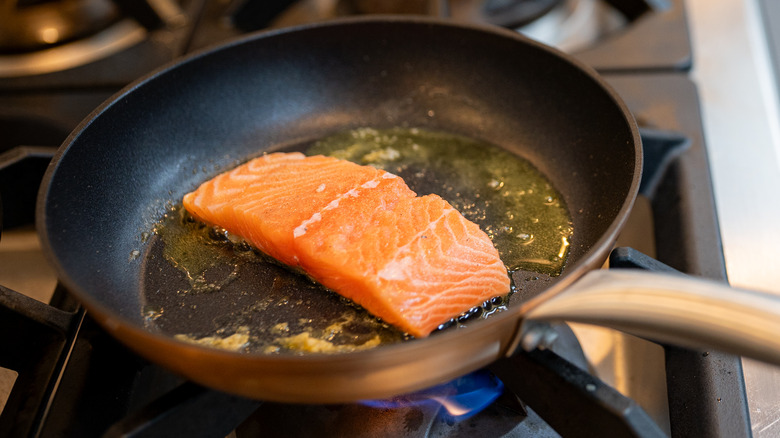Expert Advice On How To Cook Salmon Perfectly At Home
When salmon is on the menu, you'll want to make it a delicious main attraction. Cooking salmon at home requires keen attention to detail, a good amount of patience, and a dash of creativity. Sean Olnowich (James Beard honoree and culinary director at Ketchy Shuby in the SoHo district of New York City) shared some valuable tips with Mashed on achieving crisp skin and a pink, slightly rare center — the "telltale sign of a perfectly cooked salmon," as he puts it. To accomplish this feat, according to Olnowich, it's key to avoid one of the most common mistakes: overcooking salmon in the oven. To bypass this culinary blunder, he recommends firing up the burners instead.
Olnowich endorses two effective ways to make salmon on the stovetop, both of which contribute to a flaky forkful, a beautiful orangish-pink hue, and an umami flavor profile. The first method involves cooking the salmon over medium-low heat, skin side-down, without flipping the filet no matter how tempting it may be. This offers a pleasant, medium rare temperature while preserving the fish's rich flavor.
Home-cooked salmon is an intricate affair
In order to employ a more traditional method of cooking the famous fish, Sean Olnowich suggests starting with the silver skin side down, then flipping halfway through to finish on the flesh side. This tried and true technique yields a medium rare finish, as it allows for the development of a tender texture and grilled taste due to the Maillard Reaction — the browning process that generates a lovely char on foods cooked at high temperatures. Regardless of your go-to salmon strategy, Olnowich emphasizes the importance of keeping a close eye on the timer. Since salmon requires a delicate touch, "it only needs to be cooked in a pan on the stovetop for less than 10 minutes to reach its perfect cook point," he suggests.
As with many meals, a quality skillet, such as a well-seasoned cast-iron or non-stick pan, is essential when it comes to preparing a filet of salmon. For one, the right vessel ensures uniform heat distribution, preventing hot spots that might lead to uneven cooking. Along with roasted veggies, a vibrant seasoning is crucial in enhancing salmon's flavor. A minimalistic mix of salt, pepper, and a touch of olive oil does the trick nearly every time, allowing the natural taste of the entrée to shine through. If you're feeling a bit bold, experiment with various spices, toppings, and marinades such as oyster sauce, pomegranate molasses, garam masala, and crushed potato chips.

